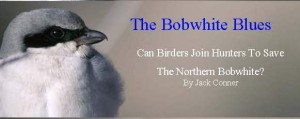Widespread societal changes in land-use practices on grazing lands, croplands and forest lands, in combination with natural forces, have directly or indirectly eliminated or degraded as much as 99 percent of native grassland habitats on hundreds of millions of acres across the eastern US. Eastern grassland habitats typically were dependent on disturbance, maintained primarily by fire and large herbivores, both of which largely have been eliminated. In addition, former grasslands have been converted to row crops, exotic grasses (fescue, Bermuda grass, bahia grass, etc.) or pine plantations, and have been lost to natural forest succession or development. Native grasslands and savannahs in the eastern US now are one of the most imperiled ecosystems in North America.
Grassland Birds in Downward Spiral
A consequence of the magnitude of loss of eastern native grasslands is that grassland birds are declining at faster rates than any other community of birds in North America. In the east, 10 of 14 grassland bird species have significant long-term declines, including Henslow’s Sparrow, Grasshopper Sparrow, Eastern Meadowlark, Vesper Sparrow, Greater Prairie-Chicken and Dickcissel. Half—18 of 36—of bird species breeding in eastern early successional habitats have significant negative long-term trends, including Bewick’s Wren, Field Sparrow, Prairie Warbler, Eastern Towhee, Blue-winged Warbler, the Indigo Bunting and the Northern Bobwhite.
Bobwhites, the Universal Species
The Bobwhite’s universal recognition and appeal, and its association with broad habitats across the range—early successional, open grasslands and forested grasslands—combine to produce an uncommon power to unite such disparate communities as livestock producers, songbird advocates, native plant societies, pollinator groups, farmers, longleaf pine enthusiasts, fire ecologists, herpetologists, soil and water conservationists, timber producers and upland game bird hunters. This power has the potential to stimulate real conservation progress over time.


